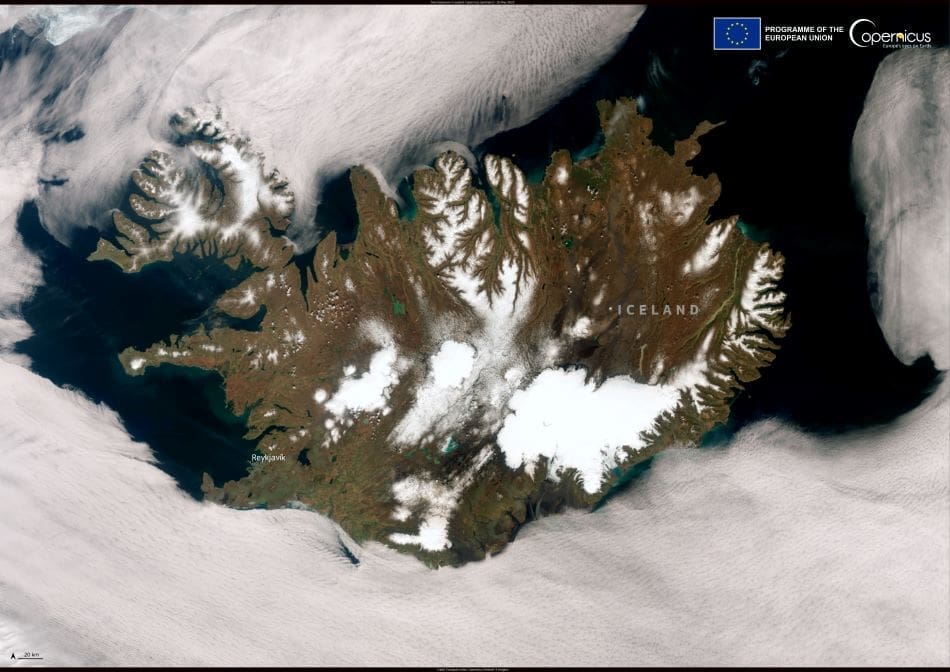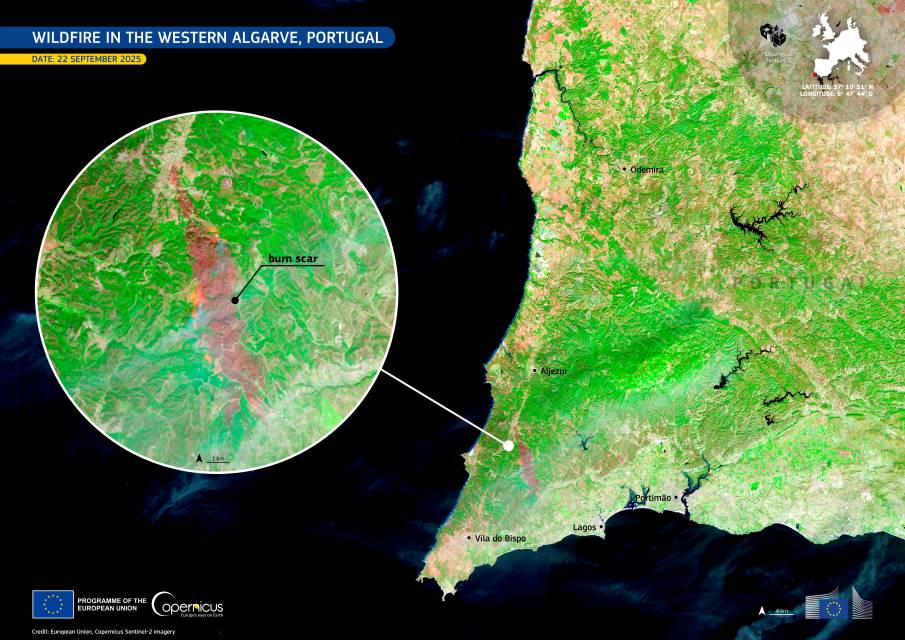A rare and intense heatwave struck Iceland in mid-May 2025, breaking multiple national and local temperature records. On 15 May, temperatures at Egilsstaðir Airport in eastern Iceland reached 26.3 °C, making it the highest temperature ever recorded in Iceland during the month of May. This surpassed the previous record of 25.6 °C, set in 1992. The data was confirmed by the Icelandic Meteorological Office and reported by RÚV.
In the capital, Reykjavík, thermometers reached 19 °C on 16 May, exceeding not only the city’s May average high of 9–11 °C but also topping any single-day high recorded during the entire summer of 2024, when temperatures peaked at 17.4 °C. The event was described by Iceland Monitor as an unprecedented early-season heat spike.
The image, captured by a Copernicus Sentinel-3 satellite on 16 May 2025, shows clear skies over much of the island, a visual hallmark of the stable high-pressure system responsible for the heatwave. Sentinel-3 provides data for monitoring land surface temperature and vegetation stress, offering critical context for climate anomalies like this one.

While occasional warm days in spring are not unheard of in Iceland, the magnitude and timing of this heatwave signal a pattern increasingly observed in the North Atlantic region. Data from the Copernicus Climate Change Service (C3S) indicates that Europe experienced its warmest April on record in 2024, part of a continuing trend linked to anthropogenic climate change. Iceland’s own climate records have shown gradual warming over the past several decades, consistent with the observed global trajectory.
Meteorologists point to a persistent ridge of high pressure over northern Europe as a driver of the event. This pattern not only ushered in southerly air masses from mainland Europe but also suppressed cloud formation, allowing surface temperatures to climb rapidly during daylight hours, especially in inland valleys.
The consequences of such events extend beyond broken records. Early-season heat can disrupt ecosystems emerging from winter dormancy, affect freshwater availability, and challenge infrastructure not designed for extreme warmth. Iceland’s power system, which relies heavily on hydroelectricity, is sensitive to changes in snowmelt and runoff patterns. Agricultural sectors and wildlife habitats may also be vulnerable to sudden thermal anomalies.
The Copernicus services continue to provide crucial monitoring of extreme weather across Europe, with the C3S offering climate trend analyses and the Emergency Management Service (EMS) supporting risk assessment. These satellite-derived data products are vital for governments, researchers, and the public in responding to a warming planet.
Featured image credit: European Union, Copernicus Sentinel-3 imagery



